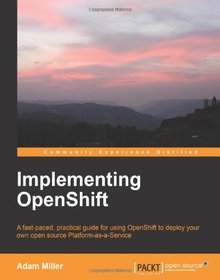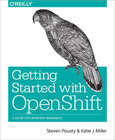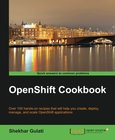Implementing OpenShift

Book Details:
| Publisher: | Packt Publishing |
| Series: | Packt |
| Author: | Adam Miller |
| Edition: | 1 |
| ISBN-10: | 1782164723 |
| ISBN-13: | 9781782164722 |
| Pages: | 116 |
| Published: | Oct 24 2013 |
| Posted: | Nov 19 2014 |
| Language: | English |
| Book format: | |
| Book size: | 2.12 MB |
Book Description:
A fast-paced, practical guide for using OpenShift to deploy your own open source Platform-as-a-Service Overview Discover what the cloud is, tear through the marketing jargon, and go right to the tech Understand what makes an open source Platform-as-a-Service work by learning about OpenShift architecture Deploy your own OpenShift Platform-as-a-Service cloud using DevOps orchestration and configuration management In Detail Gone are the days of having to provision hardware, deploy, and manage an entire environment just to write code for the next big idea, project, or custom web application. A Platform-as-a-Service cloud aims to fulfill this need, allowing developers to work more efficiently as well as allowing DevOps teams to spend less time fulfilling requests for these environments. Join us as we move into the future with OpenShift. Implementing OpenShift will walk the reader through how to easily develop and deploy upon an open source OpenShift Platform-as-a-Service. We will then discuss the architecture of the platform so that users have some insight into the inner workings of the environment. We will then take a step away from the user aspect and cover DevOps topics so that we can perform the deployment of our very own open source Platform-as-a-Service using the upstream OpenShift Origin code base. Developers are no longer in need of provisioning full-scale development environments by provisioning servers, installing and configuring software, and maintaining infrastructure just to write software. This book will show you how developers can move out of this archaic mindset and into the future utilizing OpenShift Platform-as-a-Service technologies, breaking away from the marketing jargon and into the technology that allows developers to get work done. This book also delves into the realm of DevOps, allowing you to run your own environment to support your development teams more efficiently. This book will show you how the OpenShift Platform-as-a-Service can redefine the way web application developers work by providing the building blocks upon which they are able to create their next big idea. From there, the reader will progress through the OpenShift architecture and on to a brisk automated deployment using DevOps technologies. You will learn everything you need to know in order to use OpenShift to develop and deploy applications in the cloud as well as how to deploy your very own OpenShift Origin-based Platform-as-a-Service cloud. What you will learn from this book Learn more about the cloud, it's different service models, and what each one means to their target audiences Master the use of OpenShift Online through the command line, web interface, and IDE integrations Understand the OpenShift architecture, breaking into how the open source Platform-as-a-Service works internally Deploy an OpenShift Origin-based Platform-as-a-Service in your own environment using DevOps automation tools Approach A standard tutorial-based approach to using OpenShift and deploying custom or pre-built web applications to the OpenShift Online cloud. Who this book is written for This book is for software developers and DevOps alike who are interested in learning how to use the OpenShift Platform-as-a-Service for developing and deploying applications, how the environment works on the back end, and how to deploy their very own open source Platform-as-a-Service based on the upstream OpenShift Origin project.
Download Link:
Related Books:
Getting Started with OpenShift
Intrigued by the possibilities of developing web applications in the cloud? With this concise book, you get a quick hands-on introduction to OpenShift, the open source Platform as a Service (PaaS) offering from Red Hat. You'll learn the steps necessary to build, deploy, and host a complete real-world application on OpenShift, without having to read long, detailed explanations of the technologies involved.Though the book uses Python, application examples in other languages are available on GitHub. If you can build web applications, use a command line, and program in Java, Python, Ruby, Node.js, PHP, or Perl, you're ready to get started.Dive in and create your first example application with OpenShiftModify the example with your own code and hot-deploy ...
Implementing Cisco Unified Communications Manager
Part 1 CIPT1
Foundation learning for CIPT1 exam 642-446 Dennis Hartmann, CCIE No. 15651 Implementing Cisco Unified Communications Manager, Part 1 (CIPT1), is a Cisco-authorized, self-paced learning tool for CCVP foundation learning. This book provides the knowledge necessary to install, configure, and deploy a Cisco Unified Communications solution based on Cisco Unified Communications Manager, the call routing and signaling component of the Cisco Unified Communications solution. By reading this book, you will gain an understanding of deploying a Cisco Unified Communications Manager to support single site, centralized, distributed, and hybrid call processing models. This book focuses on Cisco Unified Communications Manager Release 6.x. You will learn how to ins...
2007 - 2021 © eBooks-IT.org



